29b: Type III Hypersensitivity
1/48
There's no tags or description
Looks like no tags are added yet.
Name | Mastery | Learn | Test | Matching | Spaced |
|---|
No study sessions yet.
49 Terms
another name for type III hypersensitivity
antibody complex-mediated
list cell types involved in TIII hypersens
-immune complexes of circulating antigens
-IgM, IgG antibodies deposited in vascular BM
-neutrophils, macrophages, mast cells, complement
when does tIII hypersens develop
when antigens and antibodies form immune complexes that trigger severe damage caused by neutrophils (if in lg amounts)
what is req for TIII to occur
pre-exposure w development of antibodies
whats the prereq for immune complex disease
persistent presence of soluble antigen and antibody
what does persistent presence of soluble antigen and antibody form
insoluble immune complexes that become trapped on the BM of small blood vessels
clinical sites and time for tIII rxn
skin, lungs, kidneys, joints, brain (lg capillary beds)
6-8 h
step 1 and 2 in mechanism of type III herpersens
immune complexes lodged in tissues
activate classical component pathway
step 3 and 4 in mechanism of type III herpersens
generates chemotactic peptides that attract neutrophils
gets frustrated cant phagocytize bc too big
step 5 and 6 in mechanism of type III herpersens
neutrophils release oxidants and enzymes anyways
acute inflammation and tissue destruction
importance of C3a, C4a, C5a
also called anaphylatoxins since they can kill an animal in a manner similar to anaphylaxis by causing mast cells to release histamine granules aka pro inflammatory
what are the 2 major forms of type III hypersensitivity
localized and generalized/systemic
describe basic mechanism of localized type III
-immune complexes are deposited in tissues and rxn is seen at site of antigen entry
-preformed antibody binds to antigen
-immune complexes stay localized
describe basic mechanism of generalized/systemic type III
-excess antigen in circulation
-circulating antibody binds to antigen = free floating immune complexes in blood
-immune complexes circulate and get deposited in blood filtration
differentiate local hypersensitivity
if an antigens injected/inhaled to animal with high level of antibodies, causes arthus rxn - acute inflammation. Local hemorrhage/thrombosis occur and if severe necrotic tissue
examples of local hypersens
insect bite, booster vacc, farmer’s lung, blue eye in dogs, chronic pulmonary disease in horses
how are mast cells in type I diff from type III
-instead of IgE, receptors stimulated by complement (C3a, C5a) or IgG
-only some granules released
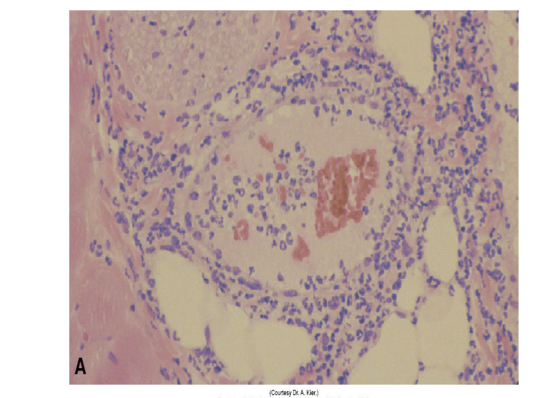
whats this show
arthus rxn in cat after vacc
whats blue eye from
natural infection a canine adenovirus 1 or vaccination of modified live vacc, develops 1-3 weeks after infection onset

blue eye symptoms
-cloudy cornea w opacity and anterior uveitis
-immune complex form due to virus release from infected corneal endothelial cells causing damage/corneal edema
pathogenesis of local type III hypersens 1st step
macrophages release NO causing tissue destruction and release cytokines that bring in neutrophils
what cytokines are used during type III
IL1 and TNF alpha
pathogenesis of local type III hypersens 2nd step
neutrophils die even if they cant phagocytize a big particle and dumps granules anyways (frustrated phagocytosis). Granules release protease to cause inflammation and tissue destruction
pathogenesis of local type III hypersens 3rd step
mast cells stimulated w IgG/IgM and aren’t fully activated so degranulation is slow and incomplete but still leads to tissue destruction
what is hypersens pneumonitis
a type III hypersensitivity rxn that occurs in lungs when sensitized animals inhale antigens like molds, dust, chemicals
how do cattle and horses susceptible to Hyper. Pneumonitis
housing in winter exposed to dusty feeds and moldy hay
what are saccharopolyspora rectivirgula
most important thermophilic actinomycetes that make very small inhalable spores to penetrate alveoli
what happens when inhaled spore antigens encounter antibodies
results in immune complexes and complement activation leading to pneumonia
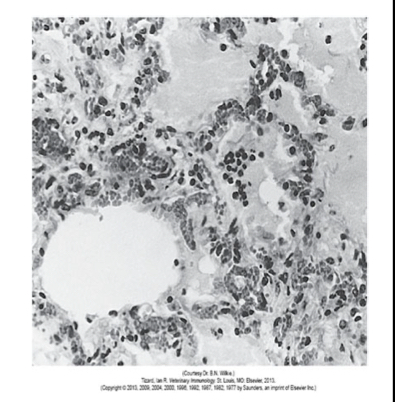
whats this pic show
cow lung that died 24 hrs after eating moldy hay. alveoli are fluid filled and walls are thick and inflamed. condition is aseptic.
what spores cause farmers lung
saccharopolyspora rectivirgula spores.
clinical features of farmers lung
pneumonia w/in 5-10 hrs of exposure to mold, trouble breathing, severe cough. acute alveolitis. treat w corticosteroids.
differentiate systemic type III
-triggered in sensitized individuals after antigen is injected
-immune complexes form in the bloodstream & deposited at blood/plasma filtration sites
-systemic inflammation
list the factors that influence deposition of immune complexes
size/amt of circulating immune complex
ability of host to clear immune complexes from circulation
anatomic/hemodynamic factors influence where complexes deposit
common locations occuring at filtration points
blood vessels, glomeruli in kidneys, synovia in joints, choroid plexus in brain
when does acute serum sickness occu
when lg amt of passively administered serum from a diff species causes a rxn about 10 days later (anti-toxin, IgG)
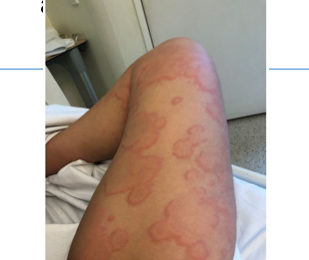
symptoms of acute serum sickness
generalized vasculitis, erythema, edema, urticaria, neutropenia, lymph node enlargement, joint swelling
how did serum sickness originate
using horses to generate large volumes of serum anti toxins
whats the time course of serum sickness
about 10 days later Ag and Ab get complexes
is chronic drug exposure an example of type III hypersens rxn
yes! like IgG mediated penicillin drug reactions,sulphonamides
whats the methimazole drug reaction
methimazole stops thyroid hormone synthesis by interfering w iodine incorporation
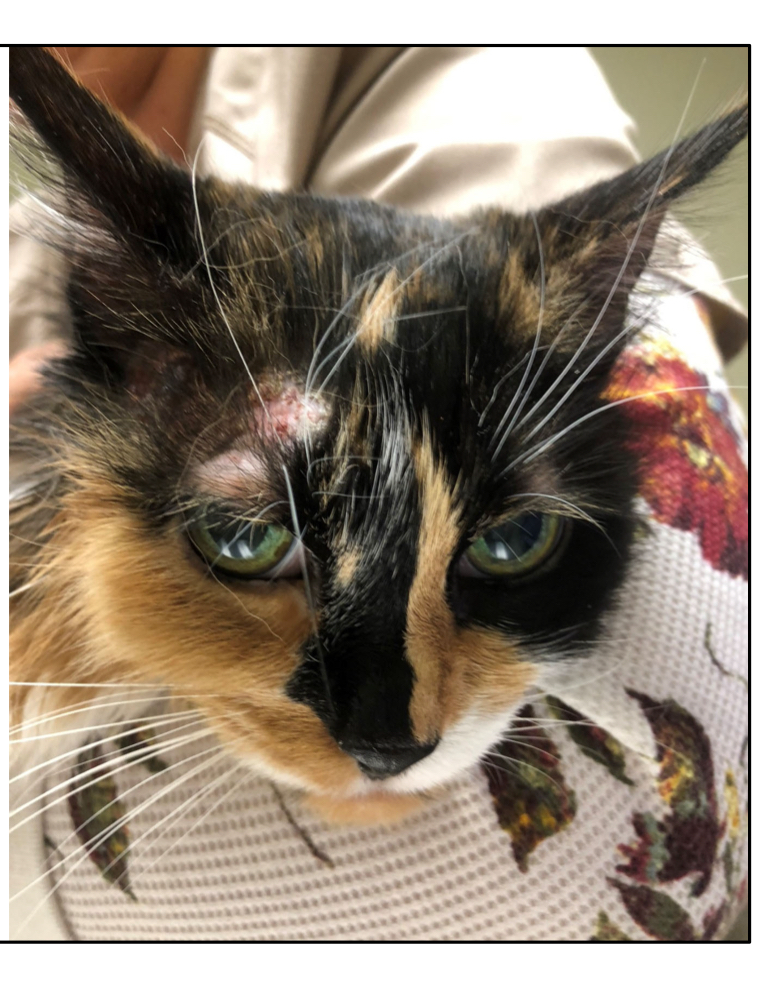
adverse rxns to methimazole
skin reactions, GI, polyarthritis, agranulocytosis, arthralgias
glomerulonephritis
major lesion for erlichiosis
purpura hemorrhagica
major lesion for strangles
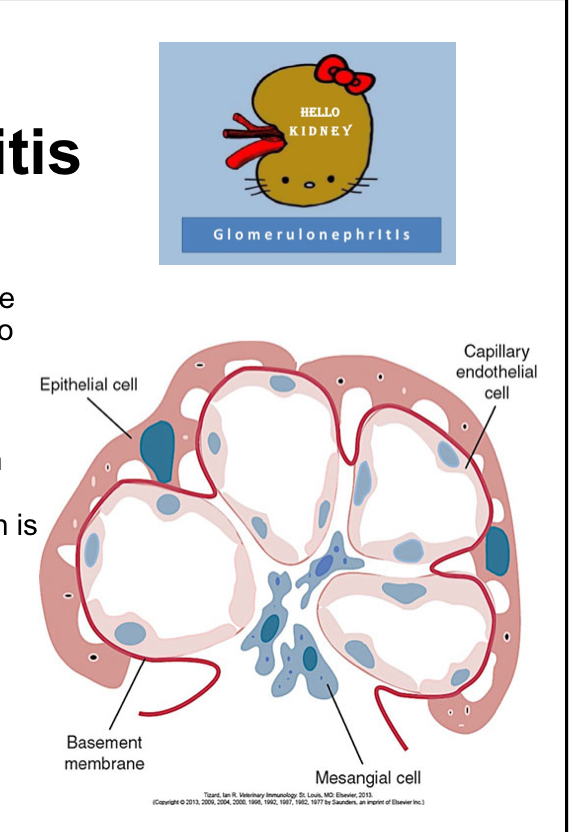
describe glomerulonephritis
-immune complex deposition in glomeruli causing BM thickening and glomerular cell proliferation
-epithelial,endothelial,mesangial cells can proliferate
describe purpura hemorrhagica in equines
related to prior bouts of strangles and vaccine strep. equi upper resp infection
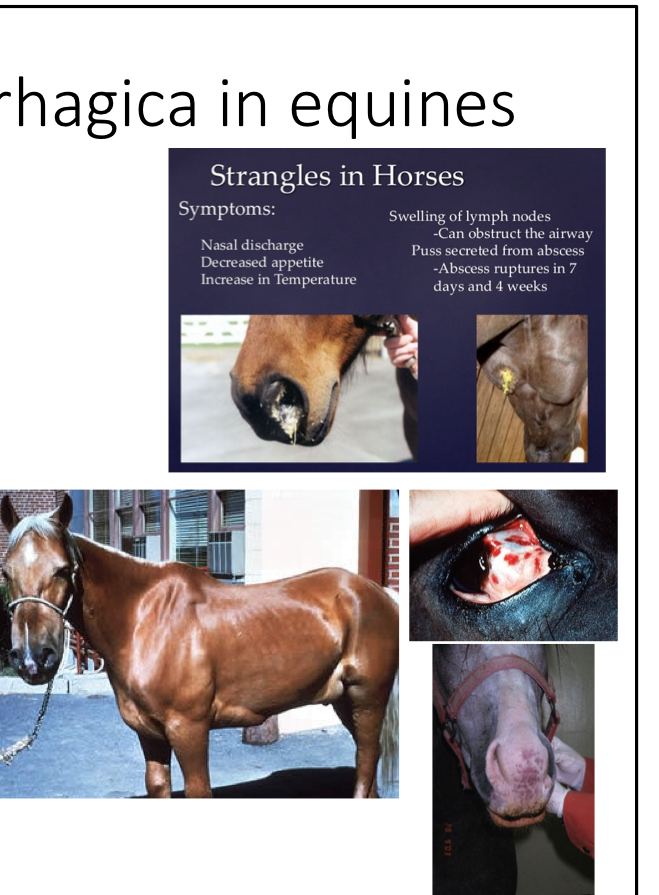
signs of purpura hemorrhagica
swelling of blood vessels of head, legs, underbelly. red spotting on gums, bleeding and. seeping from skin
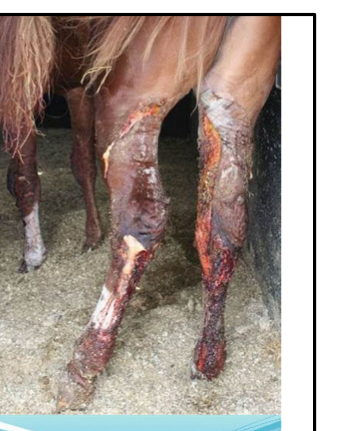
severe purpura hemorrhagica
skin dies/sloughs. can affect lungs, muscles, kidneys, lameness, laminitis, colic, neurological signs, due to improper Ag-Ab comlexes
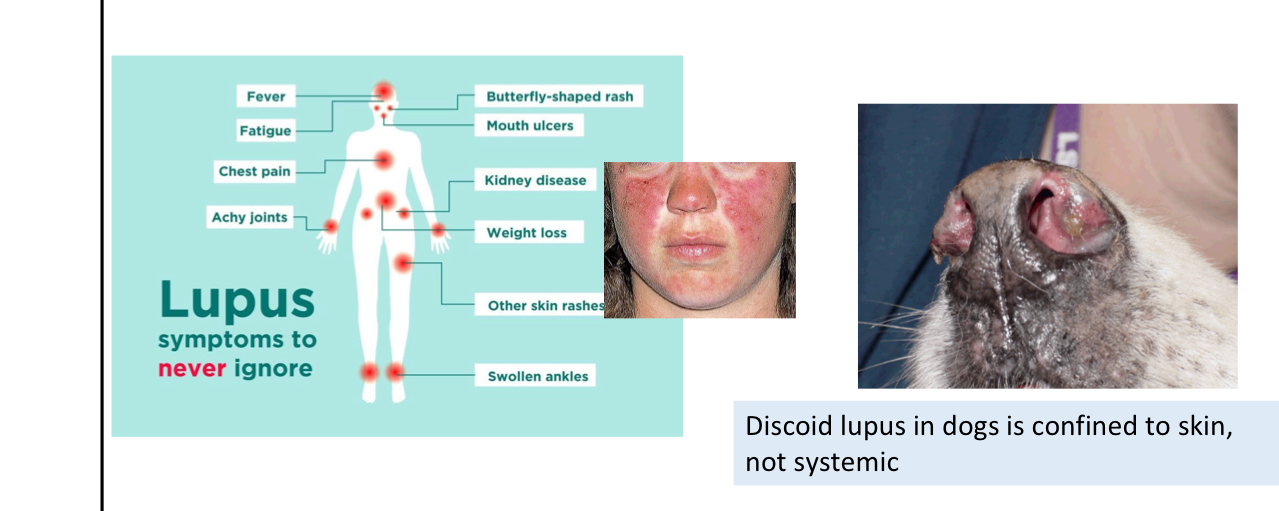
how does lupus form
systemic lupus erythematosus mediated by self nuclear antigens. the antigen is constantly supplied. immune system sees DNA after cell dies and generages anti-DNA lg
what’s it called when immune complexes trigger severe inflammation when deposited in lg amounts of tissues
type III hypersens